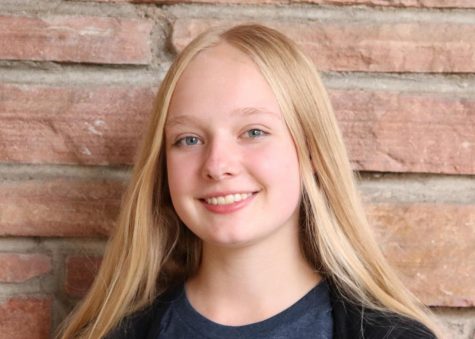COVID-19 Has Boulder Ballet Dancing to a New Tune
Since the start of COVID-19, many businesses have had to adapt their services to better fit the new guidelines. However, Boulder Ballet–a ballet company and school–faces additional obstacles as they attempt to modify their program to provide performance art during the pandemic.
When I interviewed some of the Boulder Ballet staff and dancers, they were able to give me more insight into their difficulties and how they’re adjusting their season. “The most significant challenges I think have been…trying to answer the question on how to adapt to not having an audience,” says Kylie Crandall, a member of Boulder Ballet’s board of directors. “You have a performance art and suddenly you can’t have an audience. How do you continue to allow the performers to perform and people to enjoy it when you can’t gather an audience?” Other difficulties cited by Claudia Anata Hubiak, Boulder Ballet’s executive director, were loss of revenue due to canceled performances, lower enrollment, and canceled fundraisers. Despite misconceptions, revenue from performances doesn’t make up a major part of the budget, often costing the ballet money rather than leading to significant profit, a reminder of the importance of fundraising, school enrollment, and donations to keep the ballet afloat.

Early in March, Boulder Ballet was forced to shut down completely. Struggling financially, the studio was obligated to cut down on their teaching staff and dismiss about 75 percent of their dancers and other employees. Although they were later able to rehire most of their teaching staff, the company currently remains furloughed and working on a contract basis until January. Naturally, this has been difficult for the dancers and the staff. “The hardest decision by far as a board member always is having to furlough staff or cut benefits or reduce pay…it’s people that you know and care about, those are the hardest decisions because they’re so personal,” said Crandall. Phoebe Magna, a dancer in the Boulder Ballet company, agreed that the shutdown led to financial difficulties. Usually, after the performance season ends, Magna files for unemployment. Having had to do so earlier this year due to the shutdown meant a difficulty to make ends meet for her. “Money’s been tight,” she said. “I feel really fortunate to at least have the unemployment and be able to pay my bills.”
How has Boulder Ballet been adjusting to these new times? “Creativity has been huge for thinking of ways to both continue current offerings and create new ones to generate revenue,” says Hubiak. For funding, Boulder Ballet has been able to create virtual silent auctions as well as reach out to donors to help keep the ballet running. They were also able to receive a PPP loan and some relief grants from various foundations. In an effort to continue providing accessible performances, Boulder Ballet will also be producing dance films for the professional company.
The Boulder Ballet school has also had to make changes, having transferred to teaching classes via Zoom in the spring and now offering a hybrid of Zoom and in-person classes (socially distanced, of course). Zoom classes have gotten good reviews despite some difficulties, and students are glad to have ways to continue dancing and remain connected with their teachers and peers. The Boulder Ballet school has also been an important source of funding for Boulder Ballet, providing a steady income via students’ tuition.

Although this pandemic has been difficult, hardship has generated creativity in Boulder Ballet and the entire dance community. “The communication and group effort of our staff, parents, students, Board and donors has been incredible. We are trying things we have never done before, creating new infrastructures, taking the time to create a DEI council and conduct training, write strategic plans, and create art in new ways,” says Hubiak. The furloughs and shutdown also gave many dancers the opportunity to think about their future after their dance career. “Without work…it was like what it would be like to be injured or completely out of the job…this kind of forced me to start really thinking about what I would do after ballet,” said Magna. Dancers’ careers are often limited by their physical ability, so events such as injuries or aging can end their careers. This time for reflection and consideration led Magna to decide to enroll in CU classes and think more about her future once her dance career ends. Magna was also especially appreciative of the way people have been able to adapt: “I’m so impressed and so encouraged by the community being so hungry to keep the art going… it’s been amazing that people continue to dance in their living rooms or dance outside or create dance videos that we never would have seen before. I think it’s just unlocking all this potential in the dance world that we never could have had before this.”
Although this time has brought endless challenges and changes to everyday life, Boulder Ballet has been able to continue by coming together as a community united by a love of dance.

Clara Thomas is a senior at Boulder High, and she’s excited to be a part of the Owl again. She hopes to bring a love of writing, as well as a passion for the arts, to the newspaper. Said passion is apparent in her activities outside of school, which include ballet, violin, and art. In the little free time she has, she enjoys reading, getting tea with friends, researching any topic that interests her, and listening to music or audiobooks while playing unhealthy amounts of solitaire. While she believes no fruit could compare to raspberries, in a life-or-death situation she would choose green grapes over purple.

